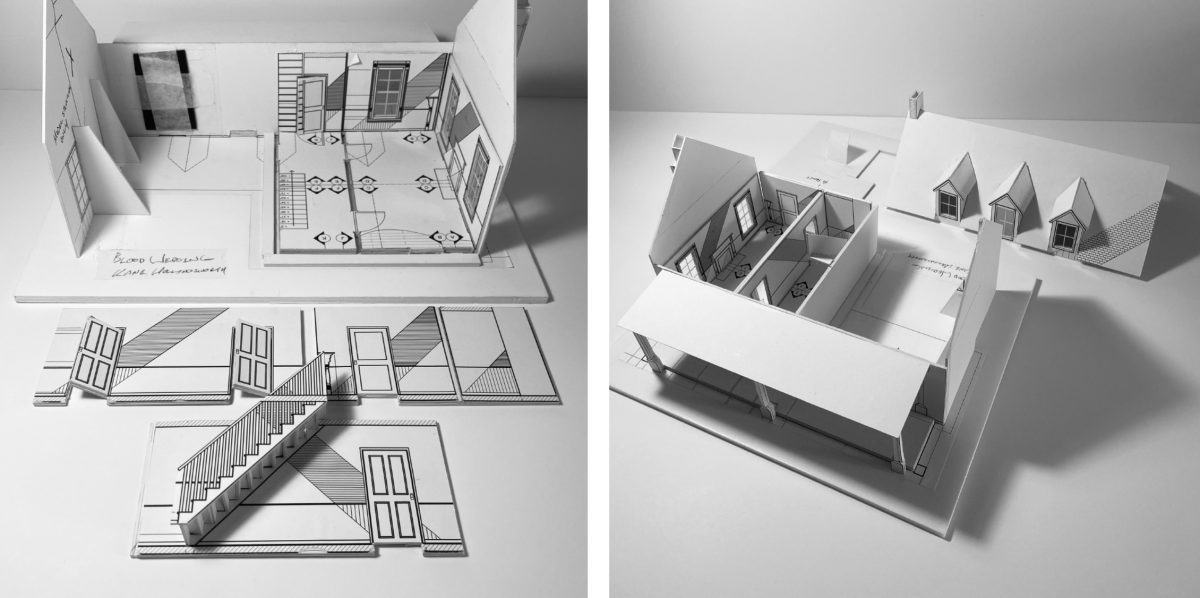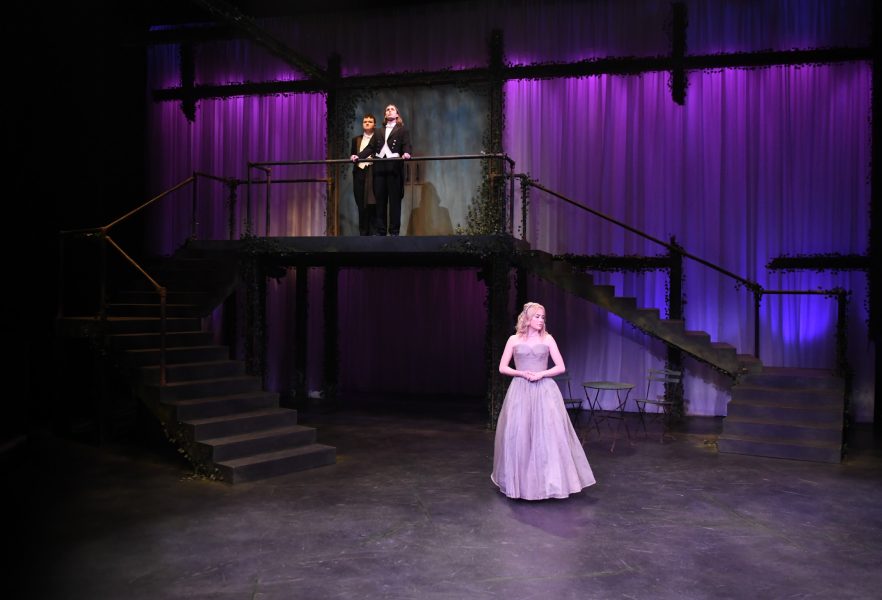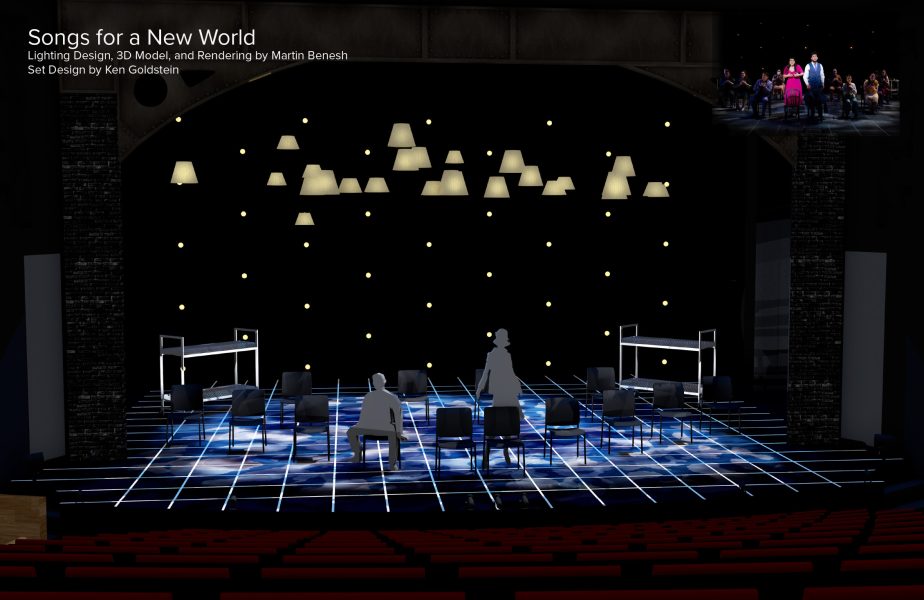In December, Vectorworks crowned the winners of the 2022 Vectorworks Design Scholarship with Michelle Wanitzek taking home the coveted Richard Diehl Award. With over 1,000 submissions, scholarships were awarded to 30 students for 22 projects in the architecture, interior design, landscape and entertainment industries. Three scholars from the entertainment industry – Kane Hollingsworth, Brock Keeler and Martin Benesh – enthuse about the creative capabilities of Vectorworks, reflect on their winning bids and share what’s next in their burgeoning careers.
Blood Wedding Reimagined by Kane Hollingsworth, Nottingham Trent University

How long have you been using Vectorworks or pre-visualisation/CAD softwares, and what initially inspired your interest in building projects/shows?
“I started learning to use Vectorworks in my second year at Nottingham Trent University to draft and realise my ideas for my Blood Wedding Reimagined project. I have long been inspired by immersive set design from a young age by Disney’s Imagineers, and I continue to be influenced by production designers such as Rick Heinrichs and David Wasco, and Sandy Reynolds-Wasco.”
Do you consider yourself self-taught, or did you develop your craft in the classroom, using online tutorials, or otherwise?
“I first started using Vectorworks after my mentor showed me the basics of using the software for set design. It was a great help to have the professional guidance from him as I progressed through the technical drawing so I could get valuable input on areas to improve as I went along. I spent quite a bit of time using the software on my own during the design process, which familiarised me with it.”
How did you hear about the Vectorworks Design Scholarship?
“I heard about the scholarship from my main tutor, Stelios, who encouraged us to enter our second-year projects. I then used my free time to build upon the initial project using the knowledge I had gained on work placement to improve it.”
Could you briefly outline your project and what it entailed?
“My set design project reimagined Federico Garcia Lorca’s theatrical play, Blood Wedding, to be set within the Texas panhandle during the Dust Bowl amidst the Great Depression. I picked up on a lot of the cues from the text surrounding the connection between the people and the land as well as sterility to create a crumbling farmhouse to be the staple set piece within an unforgiving landscape. For this project, I had to create concepts, technical drawings and plans to accompany my design along with research and various other components to communicate my design proposal.”
What are some of your personal/favourite moments of the design?
“For me, it was the process of seeing a concept become practical and contextualised within a space. I enjoyed implementing my research into the design motifs within my set to see my idea become real and a convincing space for storytelling, from the shanty wooden tiles to the dusty sash windows.”
Has this experience shaped or inspired your professional pathway?
“This project has enabled me to think more in terms of practicality in set design and the detail which can go into a design to make it more convincing to audiences. Seeing the refined idea be implemented into plans and elevations. This experience has gained me confidence in my work which inspires me to push myself further in my future design contributions.”
Where would you like to see yourself five years from now?
“I’d love to be involved in projects to create immersive environments for audiences, enabling me to contribute my own designs to a project to be realised. It would be a dream to work within film/entertainment studios, such as Disney, to create major design projects for audiences to experience.”
What’s next for you?
“I’m currently completing my third year at Nottingham Trent University. I’m hoping to progress into the art department for film as an assistant, or maybe even as a junior draughtsman, if I’m lucky, with hopes of eventually becoming a set designer in the entertainment industry.”
Shakespeare’s Women by Brock Keeler, University of Victoria

How long have you been using Vectorworks or pre-visualisation/CAD softwares, and what initially inspired your interest in building projects/shows?
“I have been using Vectorworks for just over three years now. My interest in theatre started in high school as an actor, and I soon developed an interest in the technical/design side. When I started university, I had planned on working as a stage manager but shifted my focus to design after learning about what was possible. As a designer, I am able to fuel my creative drive, and I enjoy creating the visual landscape for the show.”
Do you consider yourself self-taught, or did you develop your craft in the classroom, using online tutorials, or otherwise?
“Initially, I was taught the basics of Vectorworks in an introduction to design class in my second year of university and was later taught some of the 3D functions in another class. I supported the education I received in university with a variety of online tutorials and self-teaching. I am always learning and discovering more about the software each time I use it.”
How did you hear about the Vectorworks Design Scholarship?
“I had seen the scholarship promoted on social media and in emails from Vectorworks throughout my undergraduate degree. It wasn’t until my fourth year that I felt like I had a design worth submitting, and I was also advised by the technical director at the time to submit for the scholarship.”
Could you briefly outline your project and what it entailed?
“The project I submitted is a set design for a production of Shakespeare’s Women. Taking a modern approach to the setting, we set the play in an old abandoned industrial space which is overgrown and being reclaimed by nature. Working on a thrust stage, the set needed to provide a number of levels while still leaving the main stage area clear for blocking and choreography. The main structure of the set is made up of I-beams which create a wall and extend over the main thrust area of the stage. An upper level and two staircases provided a number of levels and playing spaces to use throughout the scenes. There are also a number of elements we see added to the space as if set up for the party which ties together the story. This is seen in the curtain of fabric at the back, the disco ball, and the festoon lighting overhead.”
What are some of your personal/favourite moments of the design?
“I was really happy with the way the whole design turned out, but I really enjoy the juxtaposition between all the materials. I find such beauty in the way we see these rusty, broken-down I-beams and concrete brought to life and covered by all this green ivy. The industrial space is further juxtaposed with the softness of the voile and silk hung behind our back wall which adds a really nice element of elegance to the environment. I also really enjoy the use of space in the theatre, as I felt like the set pushed itself out into the audience and created quite an immersive environment.”
Has this experience shaped or inspired your professional pathway?
“I have been planning on pursuing a career in theatre for a number of years now, but this experience has reassured me that I am on the right path. To have a design recognised on this level provided me with the validation I needed to continue down this career path.”
Where would you like to see yourself five years from now?
“In five years I’d like to see myself continuing to pursue a career in theatre design across the country (or maybe even the world). While I am still in school at the moment, it’s hard to tell what the future will hold, but I hope to continue creating and designing in the theatre.”
What’s next for you?
“Currently, I am working on completing my Master of Fine Arts in Theatre Design at the University of Alberta. I have always enjoyed learning and am looking forward to continuing to develop my craft over the next couple of years before diving into the entertainment industry as a theatre designer.”
Songs for a New World by Martin Benesh, State University of New York at New Paltz

How long have you been using Vectorworks or pre-visualisation/CAD softwares, and what initially inspired your interest in building projects/shows?
“I’ve used Vectorworks and CAD software since before I started my undergraduate career. I’ve always loved how storytelling provided my local community a voice and character. As I grew older, I realised that lighting design has tremendous power in amplifying that voice, and I decided I wanted to pursue the craft. It wasn’t until a few years later, when a lighting designer approached me with a project, that I downloaded the software, but I wasn’t able to do much more than draw a few rectangles until later in college!”
Do you consider yourself self-taught, or did you develop your craft in the classroom, using online tutorials, or otherwise?
“I wouldn’t consider myself to be self-taught. While I may have started drawing lines and triangles by myself, I developed my organisational method and workflow with a lot of guidance from my mentor, the lighting designer, Travis McHale. Without him and everything he’s learned throughout his incredible career, I wouldn’t be able to draft and prep shows nearly as efficiently as I can now!”
How did you hear about the Vectorworks Design Scholarship?
“This is my second time applying to the Vectorworks Design Scholarship. I initially learned about it through an email. The submission requirements ended up being really flexible, so it was easy to take a project or show I was already working on for school and submit it to the scholarship project! The first year I did it, my theatre program was recovering from the pandemic, so there were no fully realised shows that I could submit my work from. This year, SUNY New Paltz was able to put fully realised productions on stage, so I knew I absolutely had to try again!”
Could you briefly outline your project and what it entailed?
“My submission to the Vectorworks Design Scholarship was for my lighting design of SUNY New Paltz’s production of Songs for a New World in the spring of 2022. My submission included the drafting package, a rendering I made, and production photos from the completed project.”
What are some of your personal/favourite moments of the design?
“My favourite part of the project was getting into the theatre after doing all of the preparation work. It was so exciting to take all the ideas that had been circulating in my mind and bring them to life on stage!”
Has this experience shaped or inspired your professional pathway?
“I would say so! It is really lovely to get validation for my work, and this experience has definitely given me an extra boost of confidence that pursuing my passion is the correct choice for my career.”
Where would you like to see yourself five years from now?
“The Vectorworks Design Scholarship helped me discover my passion for drafting. I love the process of sketching, drawing, and communicating ideas virtually before the transition from drawing to reality. In the next five years, I’d like to transition to working as a lighting designer full-time and continue doing this work as much as possible.”
What’s next for you?
“In the spring I’m planning on moving to San Francisco for an internship. On completion, I’ll be moving back to New York City to continue freelancing.”
Visit the Vectorworks Design Scholarship web gallery to view all 22 winning designs, runner-up projects and projects from past years. Students and instructors can also download a free individual copy of Vectorworks Design Suite software at student.myvectorworks.net.





